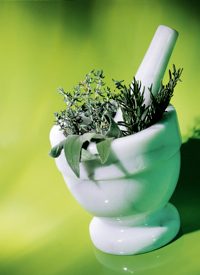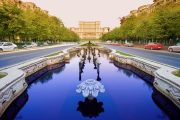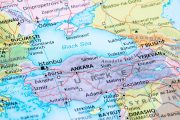
While the texts themselves were discovered long ago, the cache of ancient pharmaceuticals found onboard the sunken ancient vessel is the first time the medicines themselves have been found.
The definite usefulness of the medicines is as yet unknown, but archeologists believe that these pills were likely stored on board as part of an ancient “first aid kit” for use by sailors suffering from a variety of ailments.
“Medicinal plants have been identified before, but not a compound medicine, so this is really something new,” says Alain Touwaide, director of the Institute for the Preservation of Medical Traditions, home to the most extensive database of medical manuscripts in the world.
The vegetable-packed pills were found in 136 tin-lined wooden containers on a 50-foot long trading ship that sank to a depth of about 60 feet sometime around 125 B.C. off the coast of Tuscany. The ruins were discovered in 1974 near the port city of Piombino, which lies on the border between the Ligurian Sea and the Tyrrhenian Sea, in front of Elba Island and at the northern side of Maremma.
The cache of medicine was found some 15 years later, but the technology required to accurately analyze the DNA sequence of the material was only recently developed.
Surprisingly, given the fact that the organic material packed in the pills has been underwater for over two millennia, Dr. Touwaide reports that the small tablets were so well sealed by the ancient chemists who prepared them that there remains sufficient sample to perform the battery of tests being carried out by various organizations, including the Smithsonian, Italy’s Superintendence for Cultural Heritage (based in Tuscany), and Pisa University.
Dr. Touwaide described the methods employed by the ancient apothecaries: “The plants and vegetables were probably crushed with a mortar and pestle — we could still see the fibers in the tablets. They also contained clay, which even today is used to treat gastrointestinal problems.”
The pills are about the size of a small coin and if administered orally, would have been taken with water or wine. If the prescription called for a topical application, however, they would have been dissolved in vinegar and then applied to cuts, bruises, or burns. A doctor was likely a member of the vessel’s crew, and the stock was brought on board by him in order to prevent and treat the various illnesses common among sailors of the ancient world.
A significant question that remains unanswered is the country of origin of the ship.
“We still don’t know whether it was Roman, Greek, or Phoenician, nor do we know whether it was a long distance trading ship operating throughout the Mediterranean or a coastal vessel,” Touwaide admitted.
The precise provenance of the pills is irrelevant, however, as it is widely known that doctors from throughout the settled world along the Mediterranean coast had been penning medical reference works for years by the time the ship sank near Tuscany.
One of the principal compilations was the Hippocratic Corpus. This seminal work is a collection of around 60 early Ancient Greek medical works strongly associated with the Greek physician Hippocrates and his teachings. The topics covered in the corpus vary widely and are equally disparate in age, style, and verifiable authorship.
Although relying heavily on the information provided in the Hippocrates Corpus, Dr. Touwaide also referred to other similar sources to complement the Hippocratic knowledge. One such book is the Encyclopedia of Natural Substances.
The Encyclopedia of Natural Substances is a five-volume encyclopedia about herbal medicines written by Pedanius Dioscorides. Dioscorides was a Greek physician, pharmacologist, and botanist; and his pharmacopeia was studied and read by medical students and practitioners for over a thousand years after its publication.
Dr. Touwaide is hoping that the synthesis of ancient printed prescriptions and the plant DNA itself will produce new insight into unusual methods for employing ancient knowledge in the production of modern medicines. Most medicines are already derived from natural ingredients, but the active ingredients are isolated, synthetically formulated, and mass produced.
“We extract the information from these texts so that scientists can see if they can make shortcuts to pharmacological discoveries. We re-purpose ancient medical information and jump from the past to the future,” Touwaide explained.



